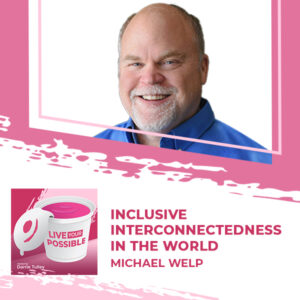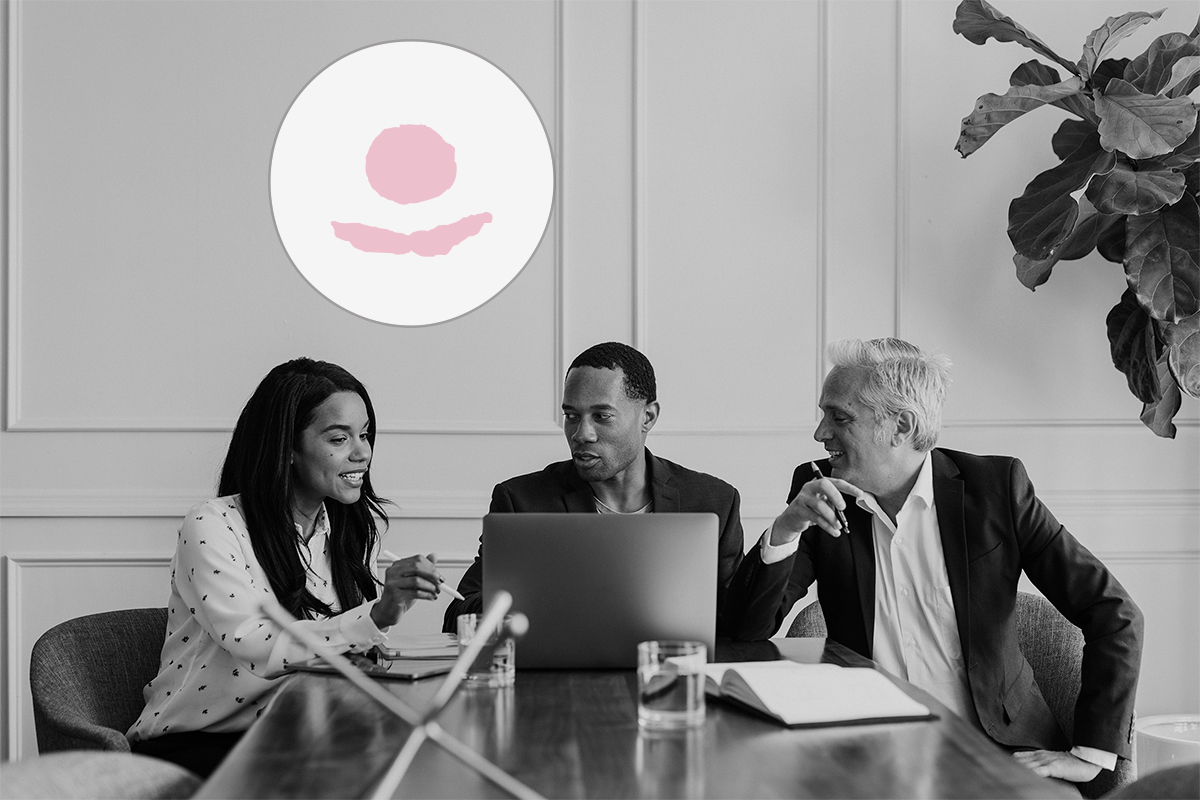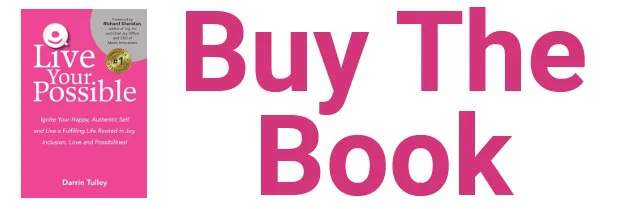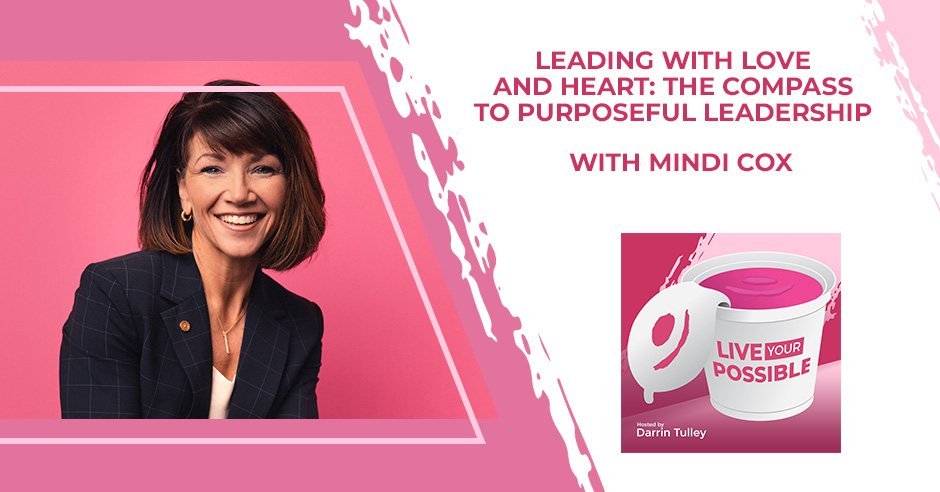
Every act of kindness and intention creates ripples of change, transforming the workplace into a hub of compassion and success. In this heartwarming episode, our guest Mindi Cox introduces us to the world of compassionate leadership. She shares her unconventional approach to leadership rooted in genuine love and care for your team and how it can drive incredible results. By leading with love, leaders can create profound impacts on the lives of employees and foster a culture of caring and respect in organizations. This conversation isn’t just about work; it’s about human connection and personal growth. Tune in now and learn how to lead with love.
—
Watch the episode here
Listen to the podcast here
Leading With Love And Heart: The Compass To Purposeful Leadership With Mindi Cox
Our guest for this episode is one of my favorite leaders in the world. We have crossed paths yet we’re on a similar path to help humans thrive in the workplace. My guest is Mindi Cox. Mindi works to connect people with purpose to deliver human-centered business results. Serving as OC Tanner‘s Chief Marketing and People Officer, she believes that an organization’s potential is intimately tied to its sense of humanity.
After more than two decades in sales and marketing as a human resource executive for OC Tanner, her core goal remains the same, to help cultivate workplace cultures where individuals feel connected to the greater purpose and impact of their work, inspiring people to seek personal and professional progress. Read to learn more about all of that along with how many in OC Tanner are helping people thrive at work all over the world. They’re showing people it is possible and how to do it.
Mindi also encourages leaders to walk the walk and respect the role we have in people’s lives, building trust where people believe they matter. Mindi leads with love in the workplace. She shares with us how this is possible and how it plays an important role where people want to give their all. I hope Mindi’s authenticity gives you chills as it does for me as she emotionally shares how much she truly cares for people. Read what resonates with you to help you live your possible and spark possibilities all around you. Enjoy the show.
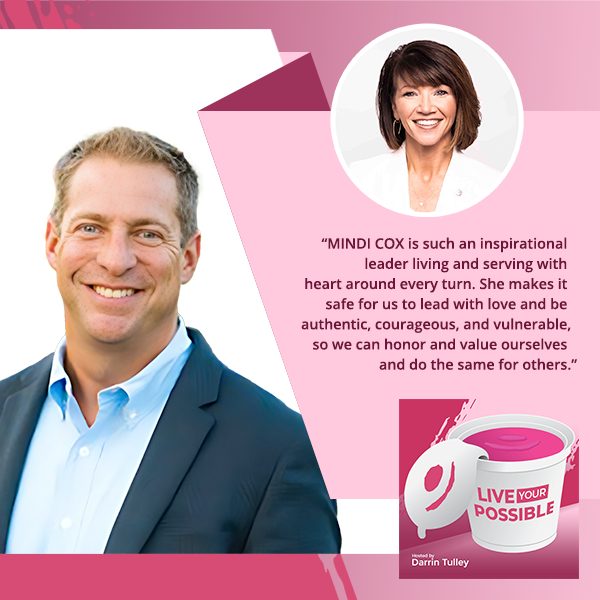
Mindi, welcome to the show. It’s so nice to see you. How are you doing?
Thank you. I’m good. I’m so happy to be here with you. Thanks for the invite.
I’m so happy you’re here. We met several years ago in Salt Lake City at OC Tanner. It was one of the most amazing events that helped me turn around my thinking in the workplace because I was on a Go & See, which was from McKinsey. I got to come in and hear you, Gary, and others speak at OC Tanner. I love your story at OC Tanner and what’s going on over there. Do you mind helping our audience understand what OC Tanner is all about and what you’re up to?
We are thrilled to host Go & Sees for groups like McKinsey. The thing that we love the most about that is it opens people’s eyes to what’s possible. That’s very much your line of business. A lot of times, people think that theories sound great but can you do them? If you have a manufacturing environment or a software environment, can you do that? Luckily for us, we have a playground of people who show that it is possible no matter what the job description is or no matter what your environment is. We get these groups that say, “I get the vision. I get to understand what your mission is.”
With OC Tanner, we look at the lens of helping organizations around the world help their people thrive at work. We do that through software and services that focus on culture and using recognition as the core tool to help people feel seen and heard and reiterate that they belong and that we’re celebrating success and accomplishments in a positive way.
To some, that sounds so light but as you look at what people need to thrive and what they need to be able to raise their hand and feel brave enough to volunteer that individual passion and contribution that only they can give, recognition is at the heart of saying, “I believe that you offer this. When you did it, I saw it. We celebrate it. I invite you to give more of that.” As people watch that happen in an organization, they trust it and then opt in. In almost 100 years of existence, we have never seen any organization that isn’t a catalyst for more goodness within its walls.
We have been on a high growth trajectory in the past few years. My theory on that is that as the pandemic hit, we had our believers and the companies that understood the benefit of having an intentional focus on great culture and thriving in their workplaces but people went home during the pandemic and rethought their entire lives, the value equation from work, how they want to show up, and where they want to spend their time.
It flipped some of those more traditional models on their heads where people said, “More than salary, position, and anything else that I’ve been relying on at the workplace at large, I am interested in lifestyle, purpose, being respected, feeling like I’m succeeding, and all of those things that we have been evangelizing for 100 years.” We did have a flood of new interest from organizations saying, “This is real. Help us figure this out.” It has been a joy to watch how the workplace has evolved these past few years because it is in the direction of more good for more people more of the time.
It is the time when we’re starting to see more of that focus back on people based on how we treat each other and what people’s needs are. The different generations have different needs as we all know. When I was at OC Tanner, I recognized that this was real. I took a picture of the sign when you go into your front door, which is, “Help people thrive at work.”
It’s not just a slogan to help the world thrive at work like your team at OC Tanner. It was thriving. It was beautiful and amazing. People were not just happy to be there. People were excited to be there and contribute. They’re happy where they’re learning because then, we could hopefully bring that back to different workplaces. I brought that picture and a bunch of ideas back to where I was at MassMutual and said, “We can do this too. For us to thrive for our customers, we need to thrive within.” How do you feel about that?
It has to be so true through and through. If you’re going to put a stake in the ground that you help organizations and their people thrive, if it’s not true at home, and your people aren’t vibrating at the energy level where others can feel it the second they walk through the door, I don’t care who you talk to. It has to be true to the person. It’s not like I’m going to take you to one group and very carefully tiptoe you past another so that you can meet with another team that seems pretty happy.
It’s not that. It’s to the person. Stop who you want to stop. Talk to who you want to talk to. Our goal is that they know how they contribute to our purpose in a deep and meaningful way. Whether you’re serving lunches in the cafeteria, you’re a security guard at the door, you’re in the C-Suite, or you’re on the floor producing an award, we all know why we’re there. It takes every single one of us.
That is something that we speak to constantly. It’s something that we message constantly but it is more importantly something that we live in the way that we treat each other. Outcomes and performance are basic to organizational health but the way of being is the key that unlocks all of that. That’s something our founder embedded in our organization but if that’s not true for any other company, it doesn’t mean that it can’t be established at whatever point in time you’re at.
I’ve seen companies talk about these things and even have values up on a wall. When I was there, I could see it come to life. You could see what the impact is that you all are having and how you would all contribute to each other’s teams. It was amazing. I’m repeating that because it’s important for the audience to understand that it is possible to do this work. It is real and important to make sure your people understand how they’re connected to their purpose, the team’s purpose, and then living out the values. That’s foundational to be able to create this culture that we all could thrive in.
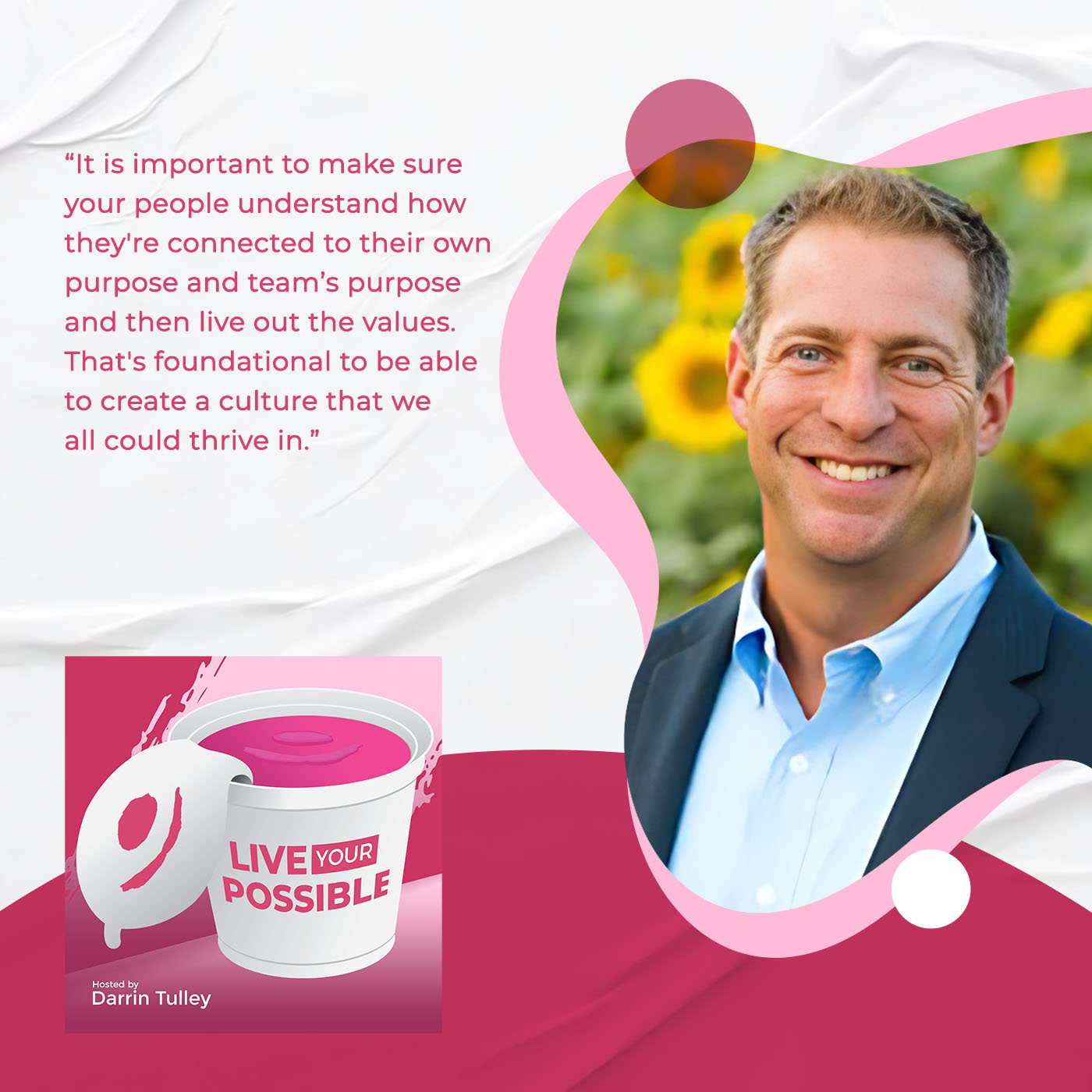
It’s funny. It’s during our onboarding season with our people. Everybody’s onboarding season is a little bit different in length. We always define it as, “When you decide that this is your place, your onboarding is done.” That might be a month, a week, or a year depending on when we earn the trust of that employee, “This is real. This is where you’re going to come and grow and contribute in a way that you haven’t before.”
One of the most consistent questions we get when we do our 30, 60, and 90-day follow-ups and events is, “I didn’t know when I could trust that people weren’t being nice because I was new. When was this going to change? When was the tone of my one-on-ones going to change with my leader?” They’re like, “I don’t think it’s going to change.” I said, “It better not.” It is what it is, and you can trust it. The biggest thing is even watching people come from environments where they have that skepticism because it’s a lived experience for them, “This is probably going to end. I’ll enjoy it while it lasts.” Luckily for us, our average tenure would say it’s lasting the length of their career.
You want to be there. It’s not just you but also the folks that are there. You have a nice fit. When people are onboarded or hired, they want to be connected to what you all are doing. Based on the leaders that I had met, they’re leading by example. That’s pretty critical to your point. If this is going to continue and be sustainable, we need to walk the walk.
Leaders are the key to everything. I have a deep passion for the fact that culture lives and is scaled through frontline leadership. We can create programs, policies, initiatives, events, and all the things that make workplaces momentarily great places to be for the moment that’s going on but if the day-to-day experience with your direct leader is not good, there is nothing organizationally we can do to make up for that.
Leaders are the key to everything. Culture lives and is scaled through frontline leadership. Share on XMy focus, energy, effort, and passion are around how we get frontline leaders or direct people leaders to respect the role that they have and the influence that they have to understand why it’s so important to develop deep and personal relationships with their people and then to act on it. You can speak to it all day long but what do actions look like that support the promises that we make in our value proposition?
You’ve talked about going from engagement to fulfillment. I also am curious about OC Tanner’s perspective. How does OC Tanner help companies get folks to go from engagement to fulfillment? I also think about involvement. To me, involvement is somewhere more people can be part of the culture, action, or movie. I talked to somebody, “Stop watching the movie. Be part of the movie. Be the star.” How does OC Tanner get folks to participate more in the movie?
That has been an evolution of culture measurement over the years too. We have been measuring employee satisfaction for a long time, “Are you satisfied? Who wants to be satisfied? What does that mean? You’re 3 stars out of 5. Is that good enough for anybody?” We said, “Are you are you engaged? Do you show up and want to give and do your best?”
Our research through the OC Tanner Institute has said fulfillment is what most employees are looking for. That looks like, “I know that I belong. I have a community here. I have growth opportunities. I find balance in my life. I have a leader who is going to be supportive of me.” Those are things necessary to a purposeful human existence but they’re also things that workplaces are uniquely positioned to provide.
When you think about all of those factors coming together, there are a few precious places where they all converge but the workplace is so key to that. To your point of, “Get in the movie instead of watch it,” when people trust that investment in the community and the fact that they belong, that they have the support that they need, and that our total focus is on their growth, they are raising their hand all day long to be part of every scene of the movie.
That’s where we start to create a vision for organizations. We can talk about these big terms like engagement and fulfillment but you have to break down where are the action items. What is it that you have systems, policies, and practices that may be acting counter to those components that make up this feeling or this state that you’re trying to inspire in people?
Where can folks go out and learn more about these statistics or measurements or maybe learn more about OC Tanner and how you all can help to measure the progress of culture and do certain things around recognition and other things that you do? It’s not just the tools. You’re showing the results that happen to show that they’re real. I don’t know if there’s an easy place folks can go to check it out.
Every year, we publish what we call the Global Culture Report. It is a workplace study that we do with worldwide focus groups, both qualitative and quantitative research, on trying to help companies and leaders look ahead, “What is the workplace sentiment where you are? What would you like to know?” We’re all trying to use surveys and different types of tools to get into the hearts and minds of our people so that we can be better at providing what it is they need.
This is a global effort to measure that sentiment but we don’t stop there. It’s not about, “Here’s what workers are thinking and feeling. Good luck.” It is around, “When we found out that’s the state that they’re in, what did that mean to them? What are the actions that would mean most to them in that moment? How do you overcome this sentiment? How do you foster that positivity?”
We get down to actionable principles. OCTanner.com is more of a resource than a commercial. If you go there and look for Global Culture Report or even google OC Tanner Global Culture Report, you can get to an executive summary. It’s all available as ungated content. Browse, read, and do better because we know better. One of the tools that we have introduced that I’m excited about is that every chapter in this report comes with an action guide, and that is a diagnostic tool. We wanted to say, “Findings are great. Actions are great but how do we help teams then create their plan?” Culture is tricky that way. It is not a lift and shift from one organization to another.
For it to be authentic and sustainable within an organization, it has to be your version of this principle. These action guides help a leadership team, an HR team, or you as an individual leader make an honest assessment of the findings in your company as they relate to the research findings in an area and then create an action plan out of that.

Operationalizing what those steps toward improved culture look like is everything. That’s all of the goodness that we want to start to put into the world. Whether you do that on a solo journey because you use our tools, or whether we can come in as consultants and help you implement that at scale in your organizations, we’re happy to be a part of your journey, whatever that is.
Thank you to OC Tanner for sure. I love all the tools. You don’t just have a tagline. You live it and help people thrive at work. I always have to make fun of, “Don’t just say be happy. Here are the steps to be happy.” You’re saying, “Here are the steps on how to help people thrive at work,” which is awesome. It is going to help people succeed at work. Organizations are going to succeed. It’s proven. Our communities might even improve. Maybe our families might even have happier homes, which is the ripple effect that you all are doing. I’m so proud to be associated with all of you through our connection and friendship. OC Tanner is one of my favorite places in the world.
That aside, we also met again at the Positive Organizations Forum when we both sat in the front row with Jane Dutton. We both have a mutual crush on her. She’s amazing in everything she does and talks about positivity in the world. You also spoke at that conference. You talked about people. You were like, “People matter.” You lead with a four-letter word too. I don’t know if you remember the talk if you can get into that a little bit because I don’t know if you’re still leading that way.
You’re talking about leading with love, which used to be like, “Don’t say that when you’re talking business. You’re getting off the rails. You’re getting into water that should be separated.” Let’s face it. The world needs more love. This has been my feeling for the longest time. We are in a relationship everywhere we go. You can choose to be in a dysfunctional relationship, a casual relationship, or a deep relationship. Whether that’s personal, professional, communal, or transitional, whomever you’re interacting with in any given spot in your life, you have to show up with some intention about the energy that you’re going to leave in that situation.
That used to be a lot more froufrou than it is now. We have had the science catch up with the sentiment. Maybe it’s the best way to say that. There’s no other way you can do it. People need love. They crave love. Whether love looks like certain care policies in your organization, leadership training, or recognition and appreciation, you can call it whatever you want but as long as you are valuing the human life in front of you, and the fact that they are volunteering part of their life to a purpose that you promise is worth their time, I don’t know how you cannot respect that as a leader every day.
When people come to work, they are voluntarily putting themselves in a position to give their time and their talents. If we forget that that is voluntary and that this is an opportunity for us to make their lives better and to drive outcomes that create those ripples of goodness in our communities and our world, I don’t think we’re missing an opportunity. It’s a betrayal of what’s possible in our lives and the lives of those who come in contact with us. There are a lot of people who feel differently about leadership and what you owe to an organization but I also know this.
If I care about shareholders and business results, the only tried, true, and proven way to do that is to get people on board to help drive the purpose and the activities that are going to lead to those results. I don’t know anyone that doesn’t respond to love. If I genuinely care about you as a person, you and I are going to create different outcomes than if I compel you to do something for a reason that’s outside of yourself. I don’t know if that’s what you were looking for. I didn’t mean to go that deep with it but I cannot separate that. In my mind and my heart, in every conversation, I have to respect the fact that we are in a relationship, and I’m going to navigate that with some serious respect.
It’s very touching. My full body got chills when you were sharing some emotion there about how much you care. This is not a speech. This is from your heart. This is what I love about your style and approach. You serve with heart. You don’t say it. You do it. People show up for people who care and show that they see them. Make sure you hear and value people but it’s using the word love and showing that you care.
I was in an offsite talking about happiness. We were talking about how you get there, what you think about it, what happens if we don’t have it, and if it is fleeting. Someone made a good comment and it still sits with me. Her name is Christina Dufour. She said, “Happiness is all based on love.” If we’re challenging our happiness and joy, maybe we’re absent in something in our life with love. Maybe we’re not sharing it, showing it, getting it, or whatever it might be. I thought that was interesting. Back to your point, if you could share love in the workplace, aren’t people going to give their all? They’re connected in an emotional way as you shared.
We forget that sometimes too because not everybody is as equally easy to love. Some of them are showing up with some armor, a lot of rocks in their backpack, or a lot of doubt. I have always tried to look at people through the lens of, “They have showed up doing the very best they can. What is in their way if it’s not enough for our team and our goals?”
Some people show up with armor, with a lot of rocks in their backpacks, with a lot of doubt. Try to look at them through the lens of: they have shown up today doing the very best they can. Share on XIf they are resistant to relationships, that’s a very candid conversation that we need to have because either there’s something I’ve done to breach trust or they have some past experiences. We all bring these ghosts of experiences from past to current. We had to work through that because I can’t make up for that. I wasn’t there. I’m not in charge of that dynamic.
If I can’t help them trust enough to put that down and be new in this relationship, they’re not going to have a healthy experience anywhere they go. Whether they decide to stay with me, our company, or this team, that’s one thing but if I believe in people, and I want them to be better no matter where they are and even to have the kindness of having them have the awareness of, “I’m carrying a lot forward from past bad experiences,” if I don’t lay it down at some point, I’m not going to have a good experience going forward anywhere.
I like how you mentioned betrayal. It goes with that at the level of responsibility as a leader. You’re sharing this human connection, trying to understand, using love as a catalyst the way you’re going at this, serving with a heart, being genuine, caring, and having empathy. These are some of the soft skills that are at the core of people thriving not only at work but in life. When we’re all born, we come in wanting similar things, and then we have been jaded, torn, or turned throughout our lives.
It is not only good. It’s amazing how you’re comfortable to have those conversations. I encourage others to try that too, whatever word that might be. It’s asking questions with care and interest, not judging and using it against people but trying to figure out what’s going on. Some people might be saying, “If you’re in an environment where it’s all about love and culture, how do you have the tough conversations if someone is not pulling their weight or not doing their job or what they’re committed to doing?”
There’s a big difference between being kind and nice. You can be pleasant to anyone and that is not a deep relationship. That is getting through a moment, a meeting, or something with a smile so that it’s over. It doesn’t mean that I care or that we have a connection going past this. You have to have those hard relationships from time to time. I will say, “I care about you and your success here. I hope that you’ve felt that for me. Something is off. I don’t know where you’ve been in the last two meetings. I know you were late on this project. We were counting on you on that.”
“Are you okay? What’s going on outside of work? Are you willing to talk about anything that’s going on outside of work that we might be able to help with? Is there something going on with this team or me? I need to know because I know what you’re capable of. I haven’t felt that from you lately. Can we talk?” I don’t think that’s a magical conversation but I do think it’s honest, “Is it me? Is it you? Is it somebody you love? We have to get this right because this isn’t working. It’s likely you already know that.”
I feel like I have to answer the question in the conversation. That was so good.
If you have something you want to work out, we can get there.
Maybe in another conversation but thanks for that. It’s helpful. Even how to have and conduct that conversation is great. Have you always led with love? Did you have a moment where you said, “Why am I not doing this?” How did that come about?
What’s so interesting is that at any point, like anybody that’s growing into who they are and what they want to be, you look around and say, “Am I doing it right?” You spend a lot of time comparing yourself to other leaders. Luckily for me, I had a lot of caring leaders around me but I’ve also had my share of difficult relationships in the workplace and otherwise.
I remember one workplace relationship in particular. Whenever I was with this person, I was not being me. I am not showing up in a way that is going to be helpful to my reputation in the long-term. I feel torn with loyalty to support this person but it’s not me. I can’t do it with any authenticity. I have a hard decision to make. I need to leave, ask for help, and navigate a different way. You do have to take that inventory. I believe in being all in before you’re all out.
I double down, “What kind of inventory can I take of myself to see if we can make this work?” If our values are not aligned, our approach is not aligned, or I cannot with any truth be loyal to what you’re asking me to do, then that is a situation where we need to separate. Those are hard conversations but that’s also about loving yourself and having enough respect for yourself.
I remember thinking, “I’m throwing this away. People are going to think what they’re going to think.” The way that situation unfolded, which is often the situation in the universe when you’re true to what you need to be, it always comes out better. You have this confidence that you’ve gained, “If I would have never stood up for myself in the way that I did.”
When you're really true to what you need to be, things always come out better. Share on XFor me, it was an action that I took. I didn’t need to make a big stand or a sign of protest but I said, “I have to move. This is not a healthy place for me.” It ended up being the right thing for me in general for my confidence in what I was about, who I was, and the space I needed to get real about who I wanted to be because I wasn’t that person at that moment. It’s creating those spaces for reflection, “When am I showing up that I’m proud of? When am I compromising? What are the variables,” and hopefully controlling for as much of that as you can. We have to be not only intentional about our leadership of others but intentional about our leadership of ourselves.
Leading the way you are authentically with love is not just courageous. You have a love for people. You’re connecting that to what you’re saying and doing. Maybe you weren’t giving what you thought you could have given in that scenario. You had that self-reflection to make a change and to change going forward. It’s a lot easier being yourself. If you had these thoughts, “I want to love the world and love people,” why not do it? That’s what you did.
People are going to find that in different outlets. I’ve chosen the business world or the business arena to be able to manifest that. That may come to people in different ways. Maybe they work for a nonprofit. Maybe they volunteer in their community. Maybe it’s with their families at home. You have to have an outlet for what it is that you feel like you can bring to the world. I would hope for more people than not that their work is an extension. No matter what your work is, the task is the one thing but the purpose you show up with and the result you’re trying to create, whether that is something meaningful to the people on your team, can be outside of the work product.
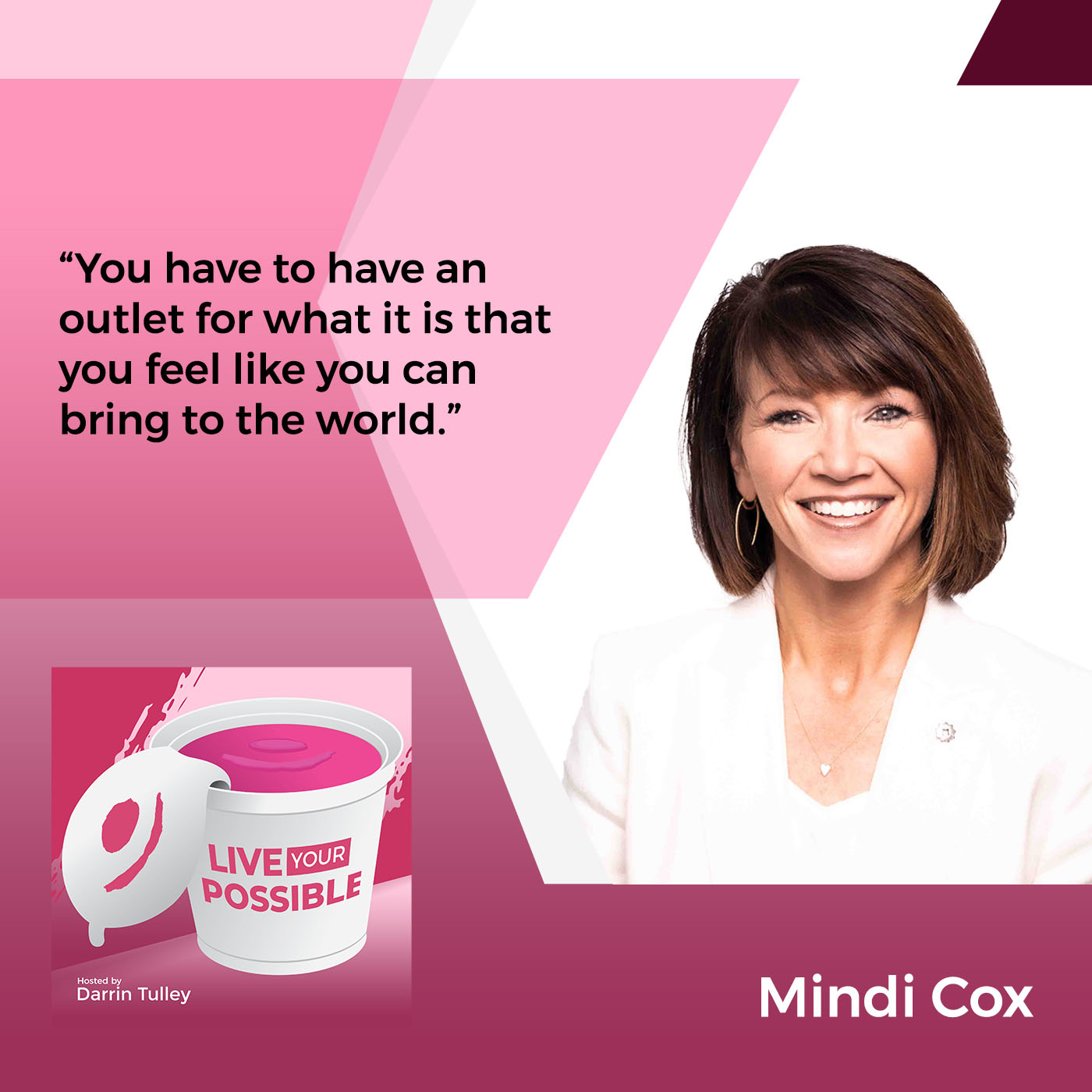
I may make tires all day but as a team leader or as a team member on the team that creates that, if I’m making the lives of those around me better and I’m bringing something positive that creates those ripples, that might be my purpose. I can’t choose that for everyone but I do want people to get clear, “I’m at my best when I’m offering this.” How can you do that every day, no matter what you’re doing as your task at work?
It’s connecting to that level of purpose. I love how it’s not just like, “It has to be this task you’re doing.” It’s connected to something bigger, different, far-reaching, and powerful. Jane Dutton talks about the job crafting. I felt like you did a little job-crafting exercise. How do you look at your role?
My biggest source of crush with Jane is the fact you read her research and you’re like, “It’s written down. That’s the thing. That’s what I’ve been feeling.” It has some validity. Good for her for quantifying it.
Have you had experiences in your life? I like to ask my guests if there have been some light-up moments or challenges that you’ve overcome that have gotten you to this point, the way you’re living your life the way you are? Are there some things that got you here? Maybe there were some painful moments that you had to overcome, too.
There are always these micro-experiences that add up to your clarity. Professionally, for me, there was a time when I had to step back from my role for my sanity and do some consulting with some startup organizations. I remember visiting the COO of one of those organizations and her saying, “Why are you doing this consulting? What is it that lights you up about your work?”
I was talking to her about being able to watch people grow. They were here and then there. There was something I did in the middle that let them unlock that. She made the simplest comment but it stopped me in my tracks. She said, “It must be hard for you to be in more of a consulting role because you drop off, deliver, or advise to the difference-making but then you don’t get to see the progress. You don’t get to watch the growth.”
I thought, “That is what’s missing. I need to be somewhere.” I was floating and loving all of the difference-making I was seeing in the organizations I was working with but to invest in an organization where you get to watch people progress is a different level of satisfaction. You’re inherently more invested in those people because you live together. They’re your family. That was a big light-bulb moment for me.
I have a son with special needs. We have talked about this before. When you’re in life-and-death situations that are medical and then developmental delays that are going to be lifelong, there’s a perspective that gets added to that. That’s knowing that everybody has something and that the workplace is uniquely situated to make hard things easier and happy things even better. Why not use that? Why not use the influence that you have in people’s lives to go beyond the walls and the work that they do for you to help them feel cared for all the way around?
I’ve had leaders that have done that. I have a workplace that has done that with flexibility, support, time away, and an invitation to be able to talk about those things in a realistic way and have people ask and care about how life is going but also with the perspective of, “In my son’s situation, nothing is ever going to be fixed. It’s never over but today is good.”
For me to be able to segment sometimes long years, months, weeks, days, or hours, I can say, “That meeting was good. What I accomplished was good. That one thing was good.” It does help me focus on the smaller accomplishments and that’s key to happiness. We all have a million reasons to get overwhelmed by so much to do and so many problems to solve that you have to break it down and celebrate the moments that are going well. My experience with my son has taught me to do that.
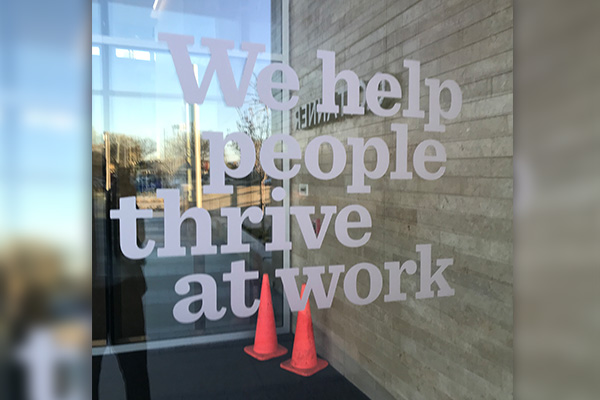
It has gotten you to stay present, to your point, see what’s going on, and appreciate what’s happening every day. It’s valuable and essential. We get so busy and caught up that we think there are bigger problems. You’re saying very nicely that it’s not easy. We all have things going on. We have to be intentional about being aware and noticing what’s right in front of us.
That is back to being in a relationship enough to have that level of awareness.
I love how you shared some of the leaders you’ve worked with. They have offered the flexibility and worked with you in different ways. That is caring. There’s a lot of talk about hybrid workplaces and folks going back in X amount of days. There are a lot of leaders struggling with it. There are people who don’t want to go back full five days or maybe a couple of days. What’s your thought on the hybrid workplace? How is OC Tanner helping with that as well?
There are so many individual opinions on that and studies of what’s most productive or effective. It does come back down to understanding what the individual needs are. We’re seeing a pendulum shift to people understanding that an organization has needs too and that there is some value to the exchange that happens when people are in the physical presence of each other. There is a different energy that happens. We can talk about productivity, “I’m more productive here and there.”
OC Tanner has taken the approach. I’ve loved the lifestyle and the balance that it creates. We have 3 days in the office and 2 days at home. We share our days in the office. They’re intentional so that everyone is there on the same day. We have a mixed environment of people with site-dependent work. They know they can’t manufacture, ship, or deliver things from their living room.
How do we create some equitable flexibility with them to say, “You’ve got life stuff too. Let’s take a look at how flexible we can be. What burdens can we ease while you’re here? What benefits can we provide that might be unique to this working group that has to be on-site five days a week?” It has been a balanced approach for us. You’re going to get as many opinions as you have people who you talk to but for us, that has been the right combination of allowing for a lot together, a little bit at home, and making sure that we maintain those close connections by being in physical proximity to each other.
Connection, flexibility, and intention are some keywords that you use there. It depends on the company. Every company has different needs and desires. A group I’m working with has a mixture of office and factory. There are different needs for sure.
We have been at the very early stages of looking at this new workplace scheduling and want to make things fair. “What’s fair?” We have to let that go. It is around equitable flexibility. What does the individual need? What does the team need? What does the company need? What does the environment require? What does the work require?
There’s not a one-size-fits-all answer. It would be amazing if we had a silver bullet that fixed every culture, “If you did this, everything would be great.” This ability to lead in this messy middle and be flexible enough to co-create solutions is the new norm. Change is going to be rapid and inevitable. Ambiguity is a skillset. Being able to operate in ambiguity is going to be a prized skillset.
You’re doing a lot. You’re out there speaking. You’re helping out the world in so many valuable ways. You’re helping people thrive at work. You like to give back too. Congratulations on being appointed to another board. I don’t know if you want to talk about that or anything you’re doing in particular about it.
I would love to give a plug. If you’re not familiar with an organization called Upwardly Global, and you’re interested in purposeful hiring and creating better outcomes for people, Upwardly Global is a national organization that specializes in placing professional-level refugees. We’re looking at so many tragedies unfolding in the world. There’s so much displacement and so many refugee communities popping up.
It could be either one of us on any given day. I’m so grateful for my moment, where I am, and where I’m at. You meet these people and they have been professionals their whole lives. They’re educated with Master’s degrees. They’re raising their kids. They have had decades-long careers, and in a moment, it changes. They are put into a country and a language they don’t speak with certifications that mean nothing. I can’t imagine what my level of resilience would be in that situation.
We have so many stories like that. Thank goodness the US is a place that is a desired destination. We have such a workplace need for highly skilled professionals. It may require a little bit more intention, more support, or different support but every employee needs a specific onboarding experience. This is about connecting these very highly skilled populations with not subsistence jobs or survival jobs but professional-level jobs that we have vacancies in.
We need the smarts that these people bring. We’re marrying that need with the purpose and these amazing individuals who have been through so much and have the opportunity to bring so much to our organizations. There is a great need. We’re looking at how to scale that and connect this growing population of what I would call a hidden workforce with the need that exists in every organization.
I appreciate you doing that as well. We’re at our time. You’re one of my favorite people in the world. You’re doing amazing work. You live with a purpose. You’re so authentic in the way that you serve with a heart. I admire the work you’re doing. I appreciate you and your friendship. I look forward to our next conversation. Thanks for joining us on the show.
Darrin, it’s always my pleasure. I’m so grateful that you’re putting all this out. Thank you.
Take care.
—
Mindi Cox is such an inspirational leader living and serving with heart around every turn. When I hear stories and the way of life, anything is possible. She makes it safe for us to lead with love and be authentic, courageous, and vulnerable. She showed us how to honor ourselves and value so we could do the same for others. She even encourages us to slow down, appreciate, and cherish some moments that are going well as her son has taught her to do each day.
Check out OC Tanner’s Global Culture Report to gain the additional proof you need to help you and your teams thrive in the workplace. It is possible, I promise you. My heart is full thanks to Mindi. I feel present, grateful, and more confident than ever that we can live our possible as our happiest authentic selves. Mindi is leaving proof and an inspiration to us all. Thank you for reading and growing together. Make it a great one.
Important Links
- OC Tanner
- Global Culture Report
- Upwardly Global
- https://www.OCTanner.com/company/about-us
- https://www.InfluenceGreatness.com/2023-Virtual-NA
About Mindi Cox
 Mindi Cox works to connect people with purpose to deliver human-centered business results. Currently serving as O.C. Tanner’s Chief Marketing & People Officer, she believes an organization’s potential is intimately tied to its sense of humanity. After more than two decades in Sales, Marketing and as a Human Resource Executive for O.C. Tanner, her core goal remains that same: to help cultivate workplace cultures where individuals feel connected to the greater purpose and impact of their work, inspiring people to seek personal and professional progress.
Mindi Cox works to connect people with purpose to deliver human-centered business results. Currently serving as O.C. Tanner’s Chief Marketing & People Officer, she believes an organization’s potential is intimately tied to its sense of humanity. After more than two decades in Sales, Marketing and as a Human Resource Executive for O.C. Tanner, her core goal remains that same: to help cultivate workplace cultures where individuals feel connected to the greater purpose and impact of their work, inspiring people to seek personal and professional progress.
Mindi has been honored with various awards for her work including Silicon Slopes’ Chief People Officer of the Year in 2023, Human Resource Executive of the Year by the Stevie® Awards for Great Employers and Human Resource Executive of the Year by Utah Business Magazine. She was also recently named among the 30 Women to Watch in Utah Business. She is a member of the Forbes Human Resource Council and is frequently sought after to contribute to podcasts, books, and articles focused on workplace culture and people leadership.
Mindi also serves as a board member for the David Eccles School of Business at the University of Utah, and Upwardly Global, a national organization working to support immigrants and refugees with international credentials to restart their careers in the United States. Professionally, she is most proud of her role in the leadership and culture work that has resulted in O.C. Tanner being named three times to the Fortune 100 Best Companies to Work For list and what that means for the workplace goodness the people of O.C. Tanner experience every day.
She is SPHR and SHRM – SCP certified and also holds a bachelor’s degree in journalism along with an M.B.A. from the University of Utah. She is the proud mom to three busy sons and is grateful for the perspective her crew gives her on work, life, wellbeing and whole-life awareness as a business priority.


